The Moravian Church, known in Germany as the Brüdergemeine, Brüder-Unität, or Herrnhuter, claims its pre-reformation origins in the present-day Czech Republic. It was “renewed” in the early eighteenth century by Count Nikolaus Ludwig von Zinzendorf (1700-1760) when groups of peasants, artisans, and craftsmen, mostly Protestant, flocked to the nobleman’s estates in Berthelsdorf, Saxony, seeking a different kind of spiritual life. As the congregations grew, these men and women from all social classes lived together in congregation settlements like Herrnhut and Herrnhaag, which were designed to foster individual spirituality and communal faith. As these settlements grew, mission congregations were set up in the Caribbean, Greenland, South Africa, North America and elsewhere. One of the consequences of this world-wide Moravian mission was that men and women, from the 18th century to today, could find themselves transported from one side of the world to the other within the space of only a few months or years. The mobility of the Moravians has always been remarkable.
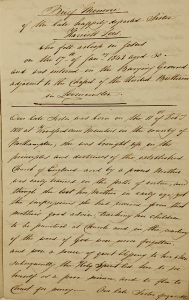
From the middle of the eighteenth century on, each member of the worldwide Moravian congregation has been invited to write a memoir that should serve as a farewell to the congregation and that was often read at his or her funeral. The primary purpose of this memoir was to articulate and preserve the ”inner journey;” that is, the person’s path from a state of ignorance of grace to his or her rebirth in Christ. Besides being read at the funeral, these Lebensläufe were disseminated to Moravian congregations around the world, where they were read by and to other Moravians to serve as a means of edification. The memoirs of leading figures and paradigmatic Moravians (whether man or woman, Count or artisan, European or African), became very popular within the Moravian worldwide congregation and were printed in the Gemeinnachrichten. The memoirs also played a central role for the Moravian Congregation as they portrayed the ”inner journey” of its members, which in turn constituted the very core of the ”inner church”. Constituting a “universal history of the church,” as originally envisaged by Zinzendorf, this extraordinary custom has also created a vast database of nearly 65,000 records of all men and women who wrote or dictated a memoir.
This site provides access to those memoirs that have been transcribed as part of the international research collaborative. As we seek to update the original Moravian Lives site according to latest standards and protocols, this site serves as a digital repository of the transcribed memoirs from Moravian Church House, London and Fulneck Archives, Fulneck, Yorkshire.
Moravian Working Lives: Exploring the British Pre-Industrial Revolution through Archival Ego-Documents
The congregation and settlement of Fulneck was established in 1742 after the local population requested the presence of the Moravians in a predominantly artisan and peasant rural population of the West Riding in Yorkshire. This population, inspired by the open-air gatherings of itinerant preachers such as George Whitefield and Benjamin Ingham, invited the Moravians, who were at that time predominantly German-speaking, to build a community just outside present-day Leeds.
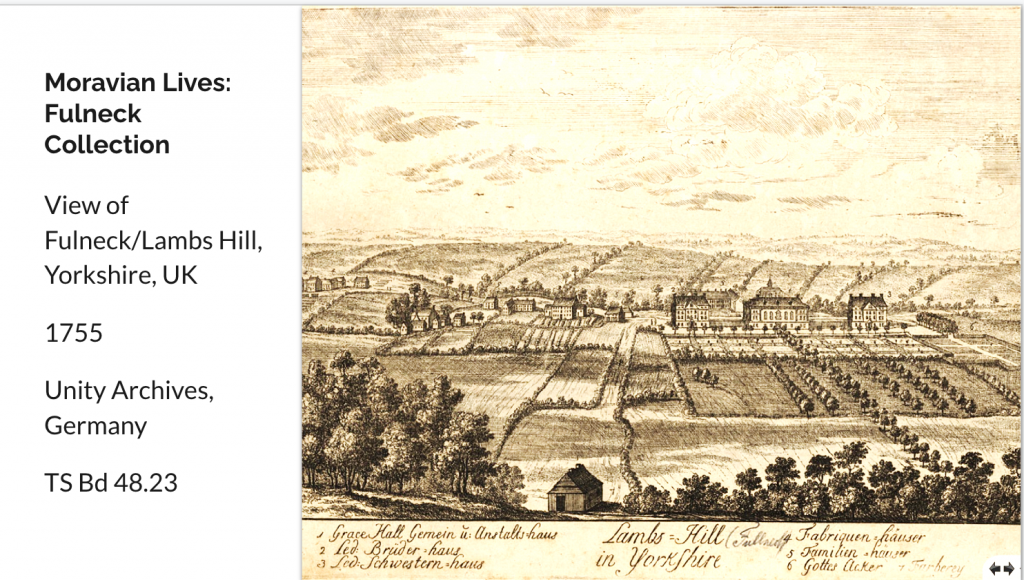
Recent scholarship on the 18th-century Moravians and the notion of work has fundamentally reassessed the role community structure played in economic production. At the beginning of the 20th century, scholars had argued that the establishment of communal property through the Moravian choir system (a grouping of members by age, sex, and marital status) was essentially a form of communism, necessitated by the paucity of resources in the early days of the settlements. Holding property in common and not receiving wages for work performed but rather receiving housing and food was considered to be a way efficiently to face environmental challenges.
In the 18th century West Riding of Yorkshire, Moravian communities consisted of primarily members of the working classes, whose artisan and laborer skills were fundamentally transformed by the advent of large-scale production in the North of England (Yorkshire and Lancashire). Weaving, spinning, and cloth-making had all been cottage industries where goods made in the home were commissioned and sold on to trading houses to be marketed in the cities of Leeds, Manchester, and London. Artisans were trained through the established master/apprentice system.
The physical and economic structure of the Moravian communities, with their communal property and housing, supported small factories, or manufactories, that acted as precursors to the larger factories and textile mills that were to dominate the environment in the Industrial Revolution. Indeed, from 1758-1780 James Charlesworth, one of the authors in the Fulneck memoir corpus, was appointed the chief manager of a building called the “Manufactory” at the West End of Fulneck in which the male members of the community (Brothers) worked at weaving and cloth making. This space created specifically for the Brothers to practice their artisan skills together challenged the traditional master/apprentice model. This new Moravian manufactory was viewed with great suspicion and resentment by outsiders to the community as its new mode of production seriously subverted established structures of capital production from master’s workshop to market. Furthermore, established trade routes and excise duties could also be avoided by means of the Moravian network of North Atlantic travel routes that used their own ships. For example, in the 1750s, members of the manufactory in Fulneck were able to send significant packages of cloth, pins, and lace directly to the Moravian community in Bethlehem, PA, circumventing usual trading houses, import duties, and trade restrictions.
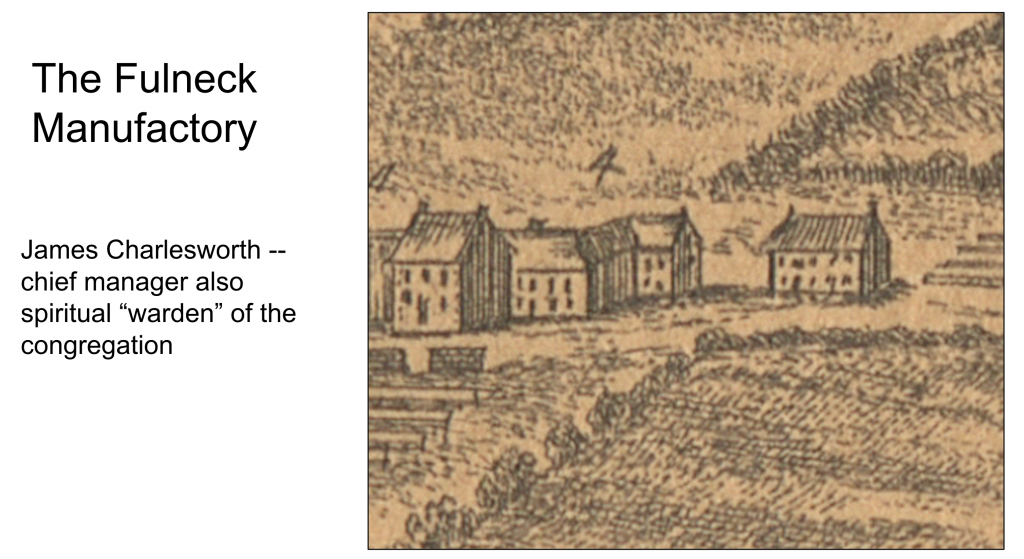
This production and distribution pattern was repeated in other European Moravian communities. In Saxony, also a major textile-producing region lying on the medieval trading route between the Baltic states and Venice on the Mediterranean, local tradesmen and ministers complained about this new economic structure, accusing the Moravians of unfair practices that undercut both the guild structure and their trading markets by having direct access to their own training workshops and markets across the Moravian world.
The attitudes of the community members to “work” from the digitized and encoded corpus are still being extracted. In the process of enriching this information beyond the memoirs, we have relied upon a secondary document cataloging Moravian families by generation and tracing family relationships in the 18th and 19th centuries. We have also consulted modern research into the Fulneck congregation to help us understand shifts in forms of labor across the 18th century. This has allowed us to create a rich and heretofore unavailable understanding of Moravian occupations and offices over time and in conversation with the development of labor practices in northern England across the century with the oncoming Industrial Revolution. Further, using the text analysis program AntConc, we can make some preliminary conclusions against which the findings from the marked-up entity relations can be tested.
From a close reading of the memoirs and the subsequent encoding of the attributes of “work”, over 76% of the men were involved in some process of the cloth-making business. Examining the collocations of “work” in this subcorpus we see that the term is associated with religious activities about 33% of the time and ⅔ of mentions of work are in the context of material labor. Work for a master as an apprentice is frequently associated with negative emotions and provides less freedom for personal sentiment than field labor.
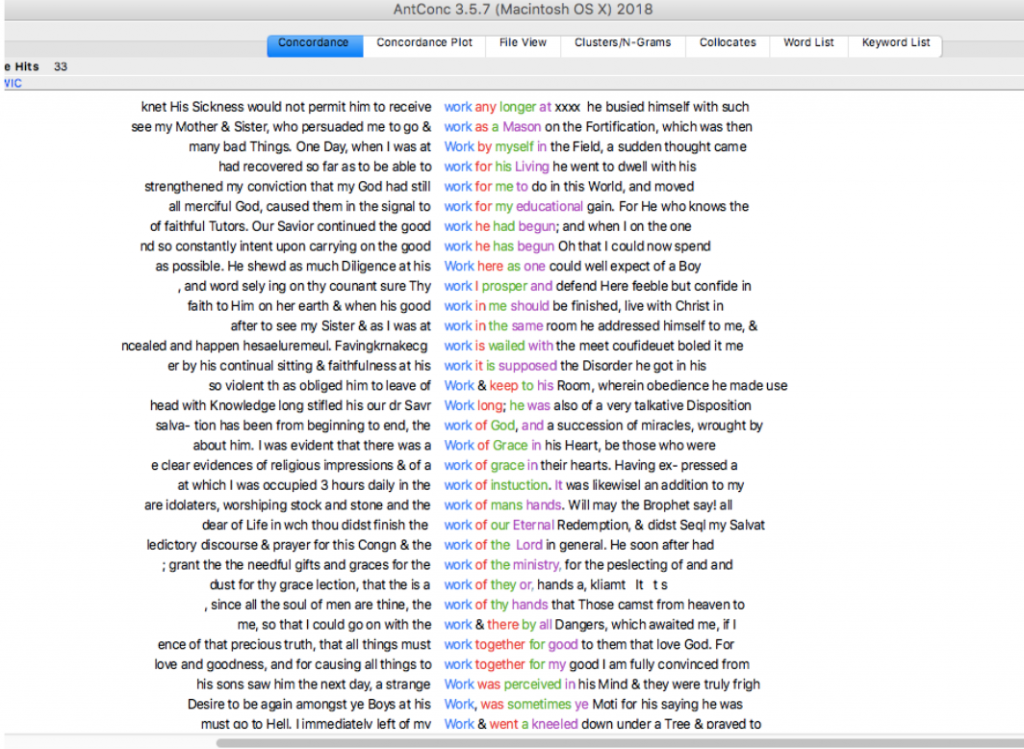
In this sub-corpus all the Moravian women are unmarried (Single Sisters). This marital status definitely affects the employment opportunities open to them. Prior to joining the community, the majority of single women were involved in some kind of field labor or domestic service. As for the men, although field work was considered hard, it was more often associated with a freedom of thought and conscience. Domestic service for the women and men is closely associated with danger, a danger of being tempted into a life that did not adhere to the behavioral norms of the Moravians.
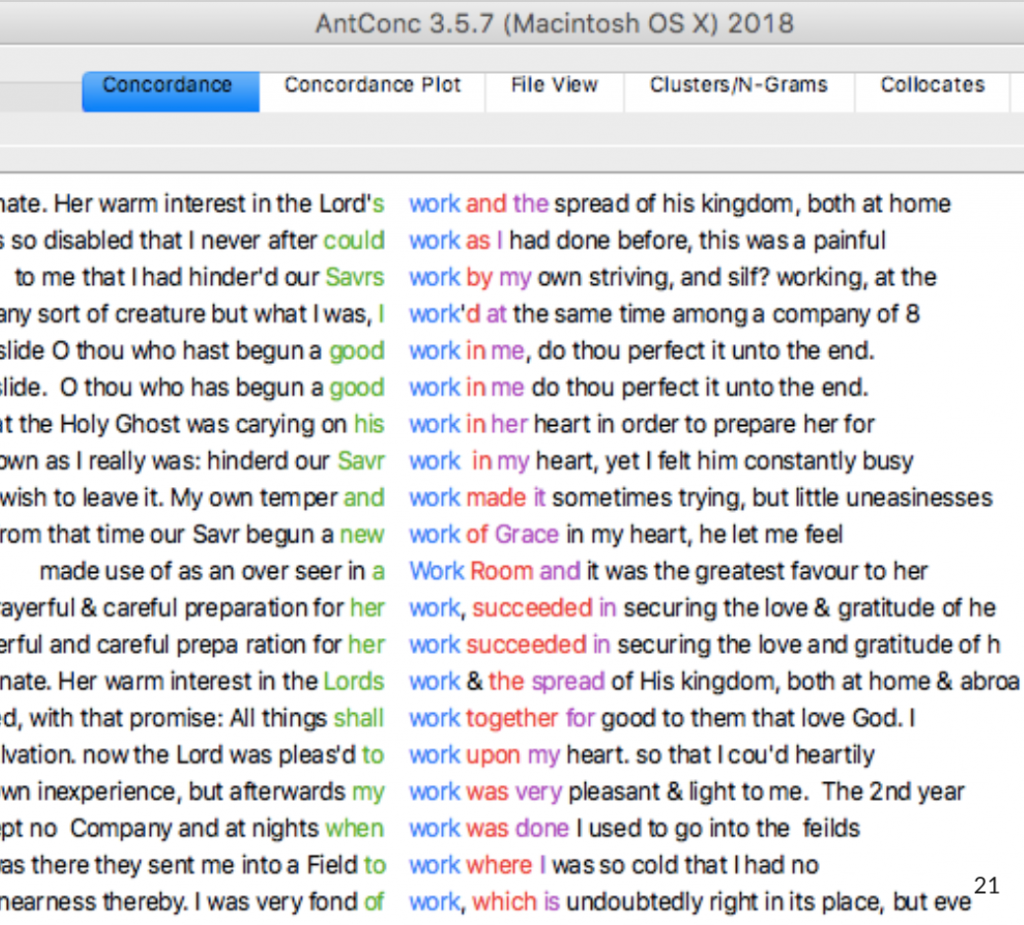
The 20th-century German sociologist, Max Weber famously investigated the distinction between “offices” (Ämter) vs labour (Handwerk/Arbeit) in the development of his concept of the “modern individual” as a “Berufsmensch” or a “person of professional calling.” In his work The Protestant Ethic and the Spirit of Capitalism (1905), Weber examined the Protestant theological systems of Calvinism, Pietism, Methodism and Baptism to trace the development of bourgeois capitalist labor. Speaking specifically about the Moravians and their founder Count von Zinzendorf, Weber argues that the most important life value within these non-conformist groups was to be active, in missionary and “professional work in a calling (Beruf)” (Weber, The Protestant Ethic and the Spirit of Capitalism, 2002, 93). He describes the Moravian Church as “a center of mission” but at the same time “a business enterprise and so introduced its members into the ways of inner-worldly asceticism, which, in any sphere of life, first asks about “tasks” and then tackles these in a calm and methodical way.” (op. cit. 93.)
The tasks that this project examines in the Moravian community of Fulneck in the West Riding of Yorkshire during the period of the early industrial revolution encompass both “office” and “occupation.” As we continue our work, we ask, can the XML-encoding of the activities that Weber describes as “tasks” in counter distinction to those he deems “ascetic” or “emotional” reveal the peculiar characteristics of this development of modern concepts of labour?
Furthermore, through this work we also test Weber’s hypothesis, namely that Moravian Pietism was not as successful as Calvinism as a spirit of capitalism because of its emphasis on emotions, thus rendering it in his eyes “a religious pasttime for leisure classes” (op. cit. 95). How might we combine our ontologies of office/occupation with those for “emotion”?
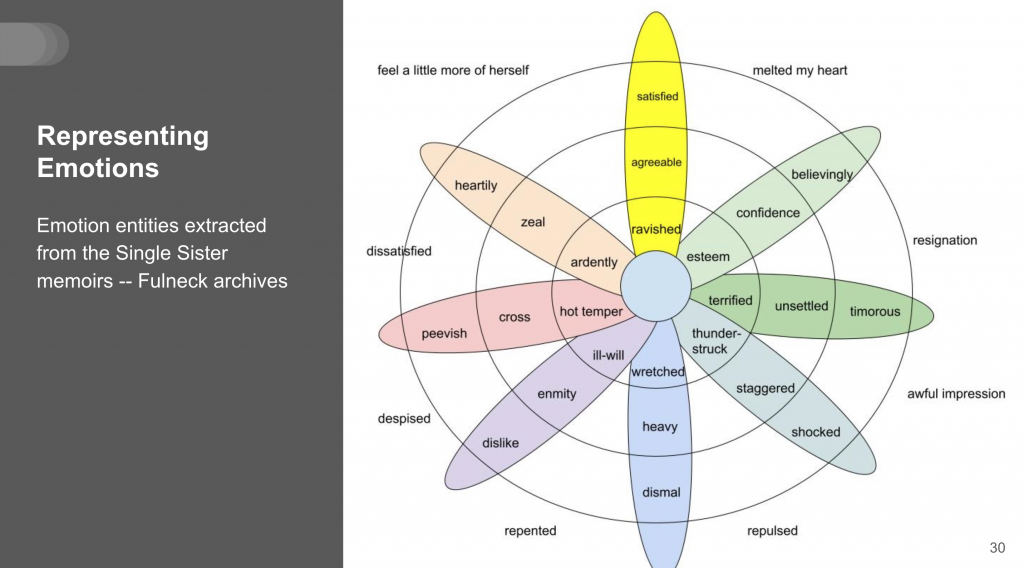
As we work on these complex and deep tagging ontologies, we also acknowledge (like Weber) that the distinction between occupation and an office within the Moravian community structure is a slippery one. The temptation to over-determine human activity, both task-oriented and ascetic, is one that the Moravians fell prey to in the mid-1740s when Zinzendorf attempted to classify the activity of each individual and by so doing, risked the community losing its strength in cohesion.